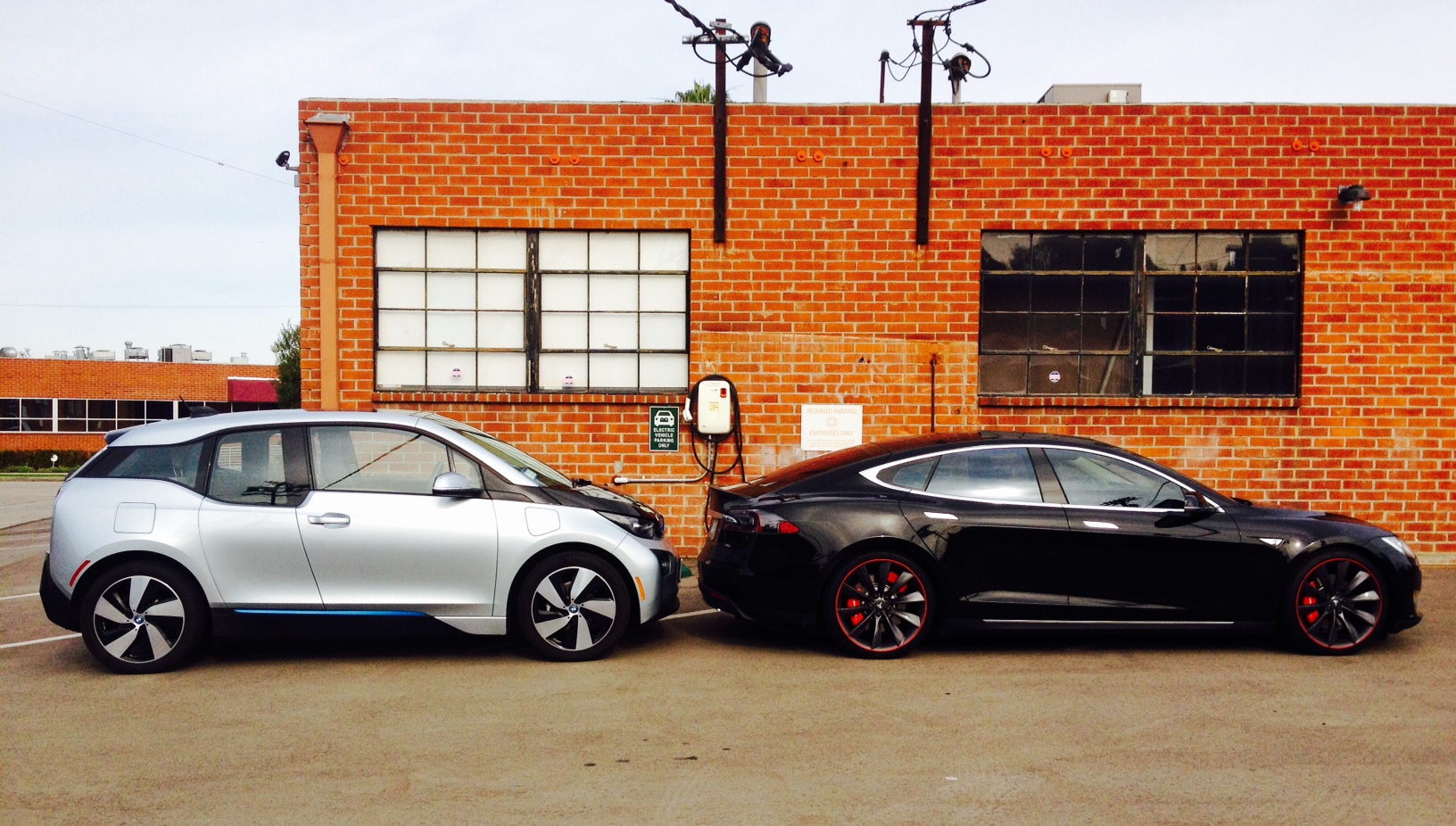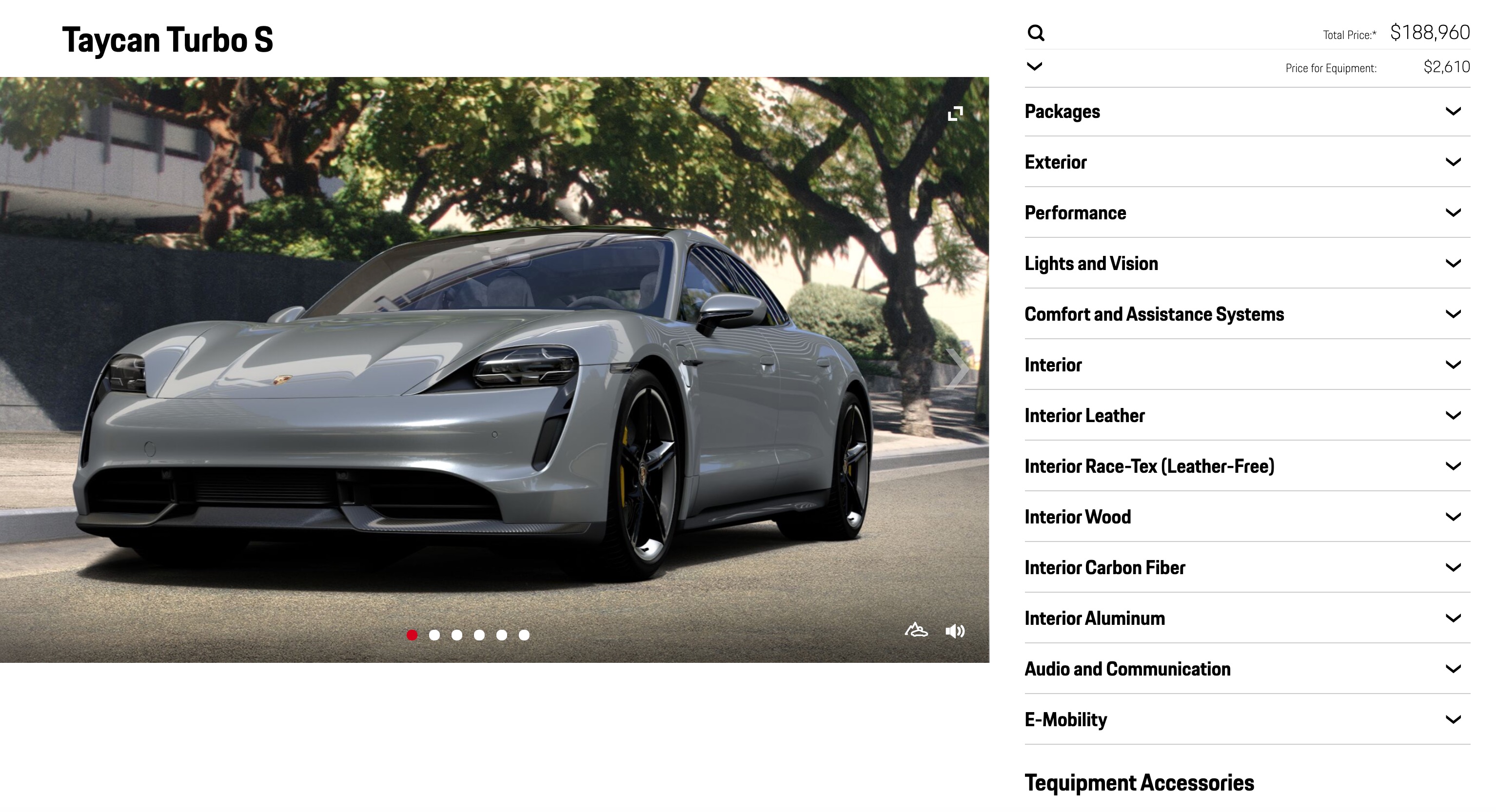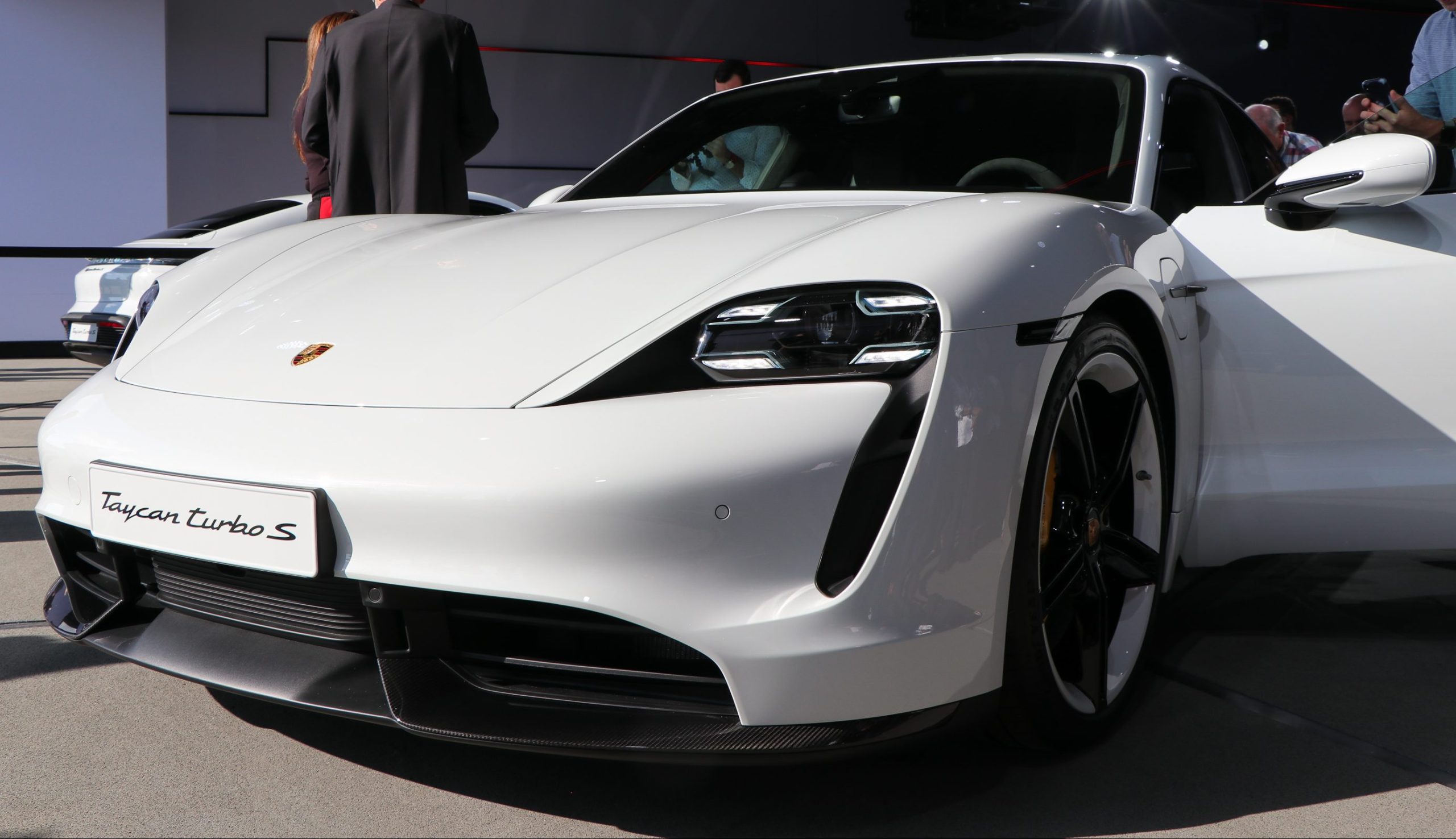
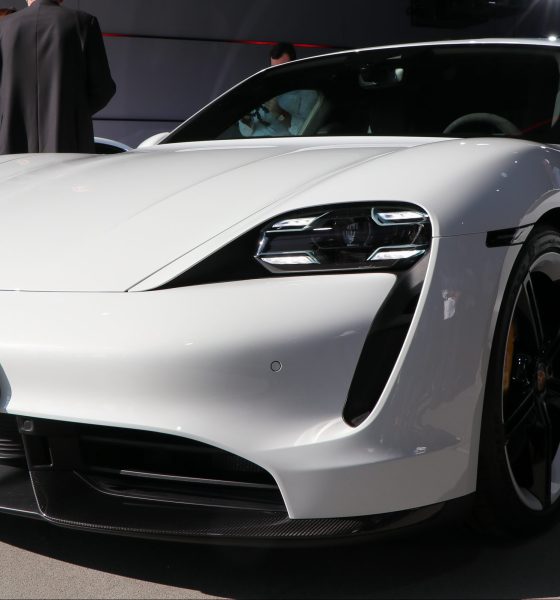
News
Porsche Taycan isn’t supposed to be a Tesla. Stop it.
Our tryst was short but, truth be told, I, a very happy Tesla owner, haven’t stopped thinking about the Porsche Taycan ever since the day we shared something special together.
It was a day of passion, driven by irrational thinking. Under the guise of a regular four-door sedan whose interior was garbed in strategically placed dark strips of cloth – clearly aimed at hiding the wolf within – it was soon obvious that I was no match for this beast.
“Do you want another go?”
It was an emphatic “no” from me to Porsche’s Platform Director for the Taycan, Bernd Propfe, as I climbed out of a production-ready Turbo S mule, and made every attempt to fight back obvious signs of nausea mixed with an overdose of adrenaline-induced shakes. Having just experienced a series of 720-degree donuts, high-speed drifts, 0-60 mph blasts in 2.6 seconds, followed by what can only be described as multiple time attack sessions on Porsche’s 1.6-mile circuit in Atlanta, the last thing I needed was to hear anyone belabor the point of repeatable performance. I get it. My stomach gets it.
It’s now two weeks later, and the taste of my Salisbury steak that I forcibly held in from lunch that day is as familiar as Taycan’s curvy, sleek and slightly bulbous contours that Porsche birthed to the world.
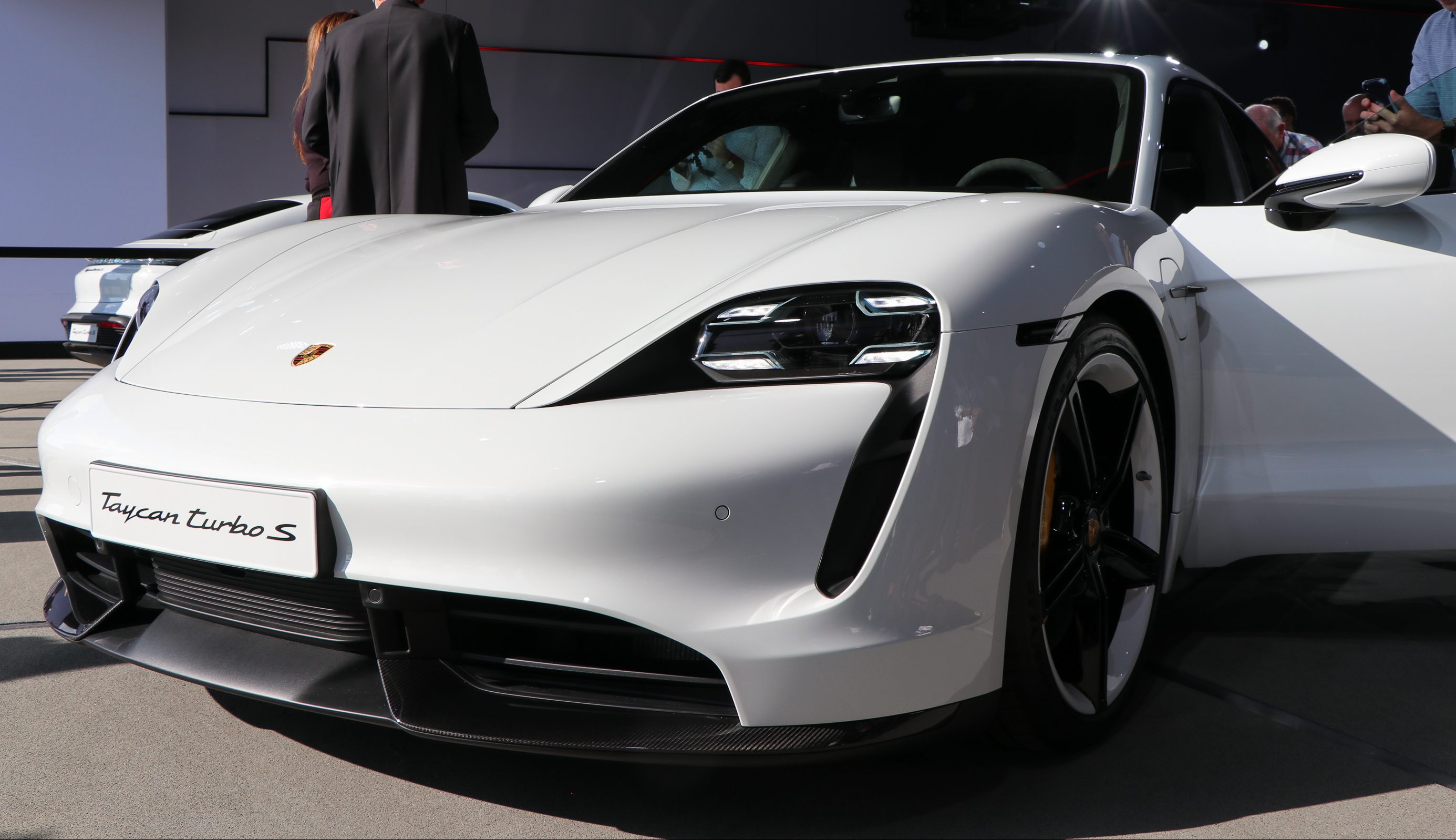
The Porsche Taycan. (Photo: Sean Mitchell/Teslarati)
The Taycan checks all of the boxes for what an all-electric, high-performance sedan is expected to be. Acceleration on par with Tesla? Check. Over-the-air software updates (like Tesla)? Check. Brand prestige (like Tesla)? Check. And anything not like Tesla, we know solicits ten pages of dialogue from the online vigilante.
And that’s where the line should be drawn.
First, let’s clear the air by saying that I love everything Tesla has done for the automotive industry and beyond. As a three-time Tesla owner with Ludicrous as my daily driving mode, a Tesla solar customer, and the guy greasing the wheels here at Teslarati, I’d say I can be as much of a supporter of Elon Musk and Tesla as the most vocal fanboi. But let’s also take the blinders off, boys and girls, and take a look at the bigger picture.
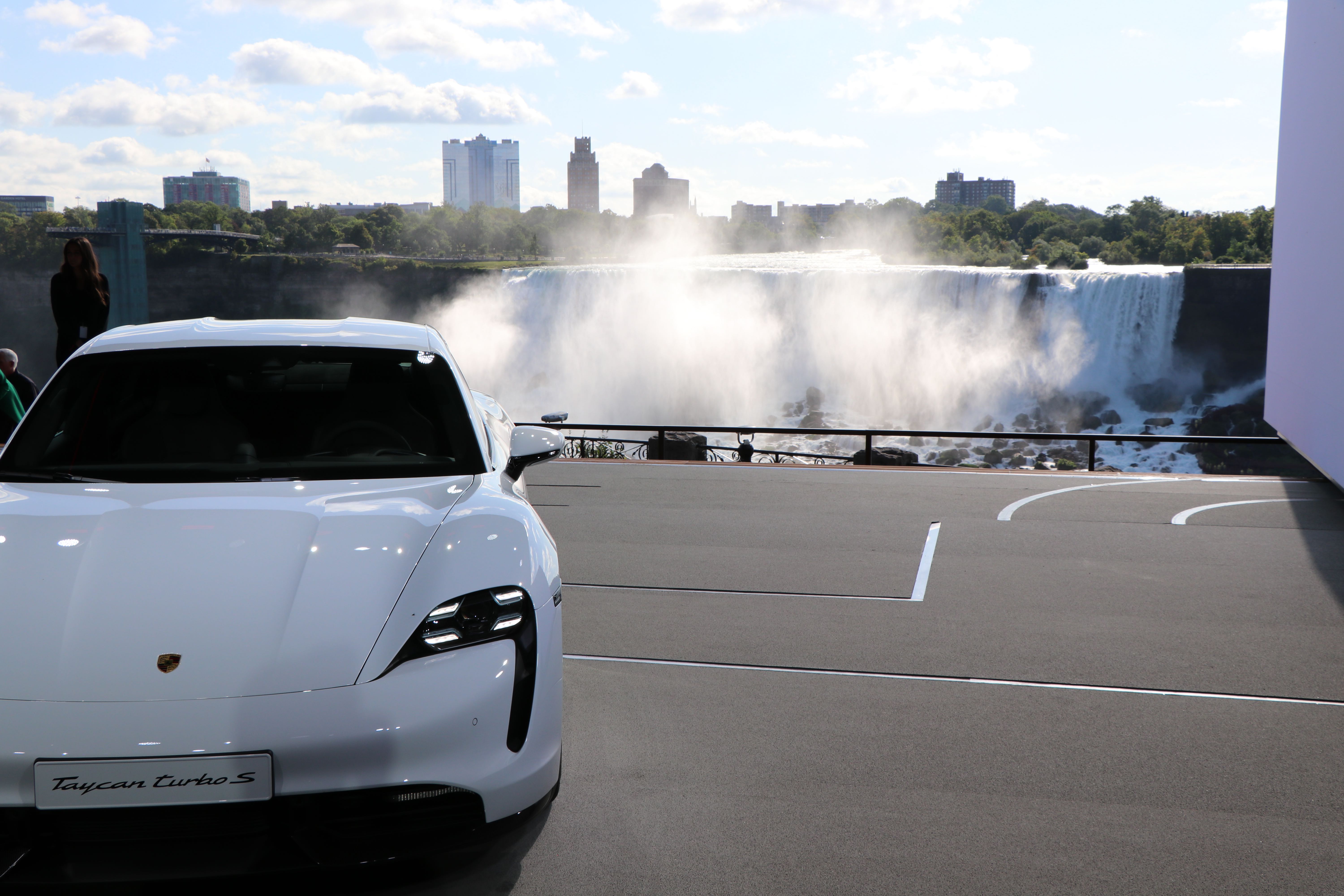
Porsche Taycan unveiling in North America on September 4, 2019. (Photo: Sean Mitchell/Teslarati)
Porsche has just released arguably the most important car in its history. A legacy automaker, whose iconic 911 has seen over 50 years in production and over 1 million units produced. An automaker that’s willing to go out on a limb and invest billions into the development of its first all-electric high-performance sedan to compete in a market that Tesla unequivocably dominates in. Unwavering to shareholder pressures to minimize disruption to the company’s biggest conventionally powered moneymakers, Porsche has remained focus on building products to support an electric future – a risk that many other automakers aren’t willing to take yet.
This should be celebrated. Porsche Taycan should be celebrated. The extension of Tesla’s electric roadway by another automaker should be celebrated.
After all, isn’t Tesla’s mission to accelerate the world’s transition to sustainable energy? I bet Tesla CEO Elon Musk himself would much rather see the Taycan in the market than not. It was he who once noted, “It’s a good thing,” referring to BMW’s entry into the market with the i3, “They need to bring it to market and keep iterating and improving and make better and better electric cars, and that’s what’s going to result in humanity achieving a sustainable transport future. I wish it was growing faster than it is.”
Still, the community is quick to point out the Taycan’s slower 0-60 mph time of 2.6 seconds versus Tesla Model S Performance’s 2.4 second time. Combined with the Taycan’s much higher price point that rivals that of some home mortgages, its lesser 280-mile WLTP-rated range versus Tesla’s 345-mile EPA-rated range, and it becomes instant social media fodder for a highlight-reel knockout that derails the entire mission.
But here’s the thing, Porsche never set out to build an affordable EV, as fellow Tesla owner and long-time EVangelist Dennis Pascual reminds us. That’s not their audience. And their audience may not realize the immense value of having up to 370-miles of range like the Model S and access to a vast Supercharger network. For many, it will be their second or third Porsche but first foray into the world of EVs. Having a familiar gauge cluster, albeit in digital form, and driving experience that they’ve been accustomed to is where these owners will find solace with the Taycan.
Porsche’s target buyer also isn’t one that balks at the idea of engaging regenerative braking through a traditional two-pedal driving style. In fact, it’s embraced. With massive 10-piston calipers up front and track-ready ceramic brakes ready to bite, there’s no mistaking the Taycan to be anything less than a driver’s car with Nürburgring roots.
Configuring a Taycan online, as I found out, was a strength-training exercise for decision paralysis. Everything can be customized.
Must have personalized door sill guards? Porsche has that for you. What material? Black or aluminum? Great. Now, would you like that illuminated? No problem! By the way, did you mean standard aluminum or brushed aluminum?
Tesla’s configuration philosophy: do you want Black interior or Black and White interior? Done.
Porsche’s seemingly endless assortment of options is every bit appreciated and expected by luxury car buyers, as it is daunting for the average Tesla consumer who’s accustomed to simplicity.
My particular Taycan Turbo S build started from a base $180k and quickly skyrocketed to over $240k after tacking on $60k in options. At nearly a quarter-million dollars, we’re in exotic car territory.
Porsche isn’t appealing to the same audience as Tesla. Different strokes for different folks.
The bottom line? The Porsche Taycan isn’t supposed to be a Tesla. And that’s a great thing.
If someone wants to spend their money on this #EV instead of an ICE… I'm cool with it… Still supports the mission of Tesla and of all #rEVolutionaries to get folks into an #EV let's not get into a circular firing squad against EVs, not everyone wants a Tesla
— Dennis Pascual (@dennis_p) September 5, 2019

News
Tesla China delivery centers look packed as 2025 comes to a close
Needless to say, it appears that Tesla China seems intent on ending 2025 on a strong note.

Tesla’s delivery centers in China seem to be absolutely packed as the final days of 2025 wind down, with photos on social media showing delivery locations being filled wall-to-wall with vehicles waiting for their new owners.
Needless to say, it appears that Tesla China seems intent on ending 2025 on a strong note.
Full delivery center hints at year-end demand surge
A recent image from a Chinese delivery center posted by industry watcher @Tslachan on X revealed rows upon rows of freshly prepared Model Y and Model 3 units, some of which were adorned with red bows and teddy bears. Some customers also seem to be looking over their vehicles with Tesla delivery staff.
The images hint at a strong year-end push to clear inventory and deliver as many vehicles as possible. Interestingly enough, several Model Y L vehicles could be seen in the photos, hinting at the demand for the extended wheelbase-six seat variant of the best-selling all-electric crossover.
Strong demand in China
Consumer demand for the Model Y and Model 3 in China seems to be quite notable. This could be inferred from the estimated delivery dates for the Model 3 and Model Y, which have been extended to February 2026 for several variants. Apart from this, the Model Y and Model 3 also continue to rank well in China’s premium EV segment.
From January to November alone, the Model Y took China’s number one spot in the RMB 200,000-RMB 300,000 segment for electric vehicles, selling 359,463 units. The Model 3 sedan took third place, selling 172,392. This is quite impressive considering that both the Model Y and Model 3 are still priced at a premium compared to some of their rivals, such as the Xiaomi SU7 and YU7.
With delivery centers in December being quite busy, it does seem like Tesla China will end the year on a strong note once more.
News
Tesla Giga Berlin draws “red line” over IG Metall union’s 35-hour week demands
Factory manager André Thierig has drawn a “red line” against reducing Giga Berlin’s workweek to 35 hours, while highlighting that Tesla has actually increased its workers’ salaries more substantially than other carmakers in the country.

Tesla Giga Berlin has found itself in a new labor dispute in Germany, where union IG Metall is pushing for adoption of a collective agreement to boost wages and implement changes, such as a 35-hour workweek.
In a comment, Giga Berlin manager André Thierig drew a “red line” against reducing Giga Berlin’s workweek to 35 hours, while highlighting that Tesla has actually increased its workers’ salaries more substantially than other carmakers in the country.
Tesla factory manager’s “red line”
Tesla Germany is expected to hold a works council election in 2026, which André Thierig considers very important. As per the Giga Berlin plant manager, Giga Berlin’s plant expansion plans might be put on hold if the election favors the union. He also spoke against some of the changes that IG Metall is seeking to implement in the factory, like a 35-hour week, as noted in an rbb24 report.
“The discussion about a 35-hour week is a red line for me. We will not cross it,” Theirig said.
“(The election) will determine whether we can continue our successful path in the future in an independent, flexible, and unbureaucratic manner. Personally, I cannot imagine that the decision-makers in the USA will continue to push ahead with the factory expansion if the election results favor IG Metall.”
Giga Berlin’s wage increase
IG Metall district manager Jan Otto told the German news agency DPA that without a collective agreement, Tesla’s wages remain significantly below levels at other German car factories. He noted the company excuses this by referencing its lowest pay grade, but added: “The two lowest pay grades are not even used in car factories.”
In response, Tesla noted that it has raised the wages of Gigafactory Berlin’s workers more than their German competitors. Thierig noted that with a collective agreement, Giga Berlin’s workers would have seen a 2% wage increase this year. But thanks to Tesla not being unionized, Gigafactory Berlin workers were able to receive a 4% increase, as noted in a CarUp report.
“There was a wage increase of 2% this year in the current collective agreement. Because we are in a different economic situation than the industry as a whole, we were able to double the wages – by 4%. Since production started, this corresponds to a wage increase of more than 25% in less than four years,” Thierig stated.
News
Tesla is seeing a lot of momentum from young Koreans in their 20s-30s: report
From January to November, young buyers purchased over 21,000 Teslas, putting it far ahead of fellow imported rivals like BMW and Mercedes-Benz.

Tesla has captured the hearts of South Korea’s 20s-30s demographic, emerging as the group’s top-selling imported car brand in 2025. From January to November, young buyers purchased over 21,000 Teslas, putting it far ahead of fellow imported rivals like BMW and Mercedes-Benz.
Industry experts cited by The Economist attributed this “Tesla frenzy” to fandom culture, where buyers prioritize the brand over traditional car attributes, similar to snapping up the latest iPhone.
Model Y dominates among young buyers
Data from the Korea Imported Automobile Association showed that Tesla sold 21,757 vehicles to the 20s-30s demographic through November, compared to BMW’s 13,666 and Mercedes-Benz’s 6,983. The Model Y led the list overwhelmingly, with variants like the standard and Long Range models topping purchases for both young men and women.
Young men bought around 16,000 Teslas, mostly Model Y (over 15,000 units), followed by Model 3. Young women followed a similar pattern, favoring Model Y (3,888 units) and Model 3 (1,083 units). The Cybertruck saw minimal sales in this group.
The Model Y’s appeal lies in its family-friendly SUV design, 400-500 km range, quick acceleration, and spacious cargo, which is ideal for commuting and leisure. The Model 3, on the other hand, serves as an accessible entry point with lower pricing, which is valuable considering the country’s EV subsidies.
The Tesla boom
Experts described Tesla’s popularity as “fandom culture,” where young buyers embrace the brand despite criticisms from skeptics. Professor Lee Ho-geun called Tesla a “typical early adopter brand,” comparing purchases to iPhones.
Professor Kim Pil-soo noted that young people view Tesla more as a gadget than a car, and they are likely drawn by marketing, subsidies, and perceived value. They also tend to overlook news of numerous recalls, which are mostly over-the-air software updates, and controversies tied to the company.
Tesla’s position as Korea’s top import for 2025 seems secured. As noted by the publication, Tesla’s December sales figures have not been reported yet, but market analysts have suggested that Tesla has all but secured the top spot among the country’s imported cars this year.
